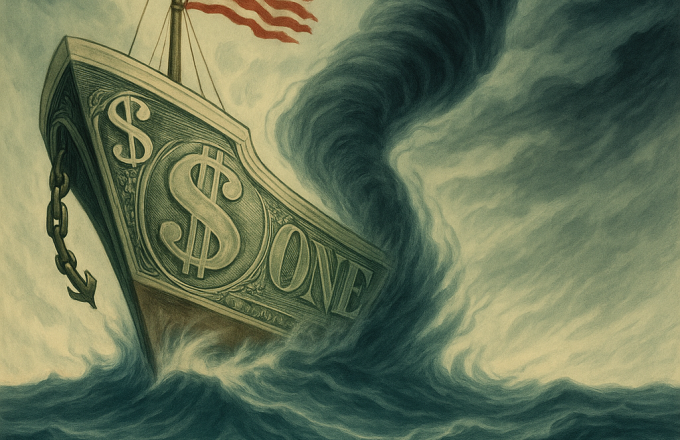
Africa Needs More Trade for Economic Development
The three-day 2024 Summit of the Forum on China-Africa Cooperation (FOCAC) kicks off in Beijing today, marking the fourth time the meeting has been held as a summit in the past 24 years. Reportedly this is a mega event in Beijing attended by the most foreign heads of state since the COVID-19 pandemic. The last FOCAC in Beijing was held in 2018, when the trade war and suppression of Chinese high-tech industry initiated by the then US President Donald Trump just started. At that time, China’s electric vehicle industry was still under the radar, the power of artificial intelligence remained in the imagination, the carnage of the Russia-Ukraine war and Israeli-Palestinian conflict had yet to come to pass, let alone the unforeseeable worldwide ravages brought by the coronavirus pandemic spanning several years.
GDP growth requires more than raw material and agricultural exports
However, in this ever-changing world, the tumultuous turn of events over the past few years has not only radically transformed the global landscape but has also nudged Africa from a bit part to the centre of international political and economic stage. Particularly noteworthy is the admission of the African Union (AU) as a permanent member of the G20 in September 2023, giving African countries a stronger voice in international affairs. It is well-known that the G20, as the locus of the greatest political and economic power in the world, accounts for 85% of global gross domestic product (GDP) and 75% of international trade. Previously, South Africa was the only African member of the G20. With more than 50 African members, representing almost the entire continent, the AU plays a role in the G20 similar to that of the European Union (EU). Another example is that several months after the Gaza conflict, South Africa filed a case against Israel for committing genocide at the International Court of Justice. That such a small country as South Africa would take issue with major international affairs not directly related to its own interests would have been unimaginable in the past. Moreover, in addition to a wealth of natural resources, Africa also has 54 votes to offer at the United Nations.
While geopolitical change has enhanced its status, Africa’s economic performance remains lacklustre in general. As the world’s second-largest continent in terms of population and land area (20% of the Earth’s land surface), Africa boasts the youngest median age and rich reserves of natural resources. Nonetheless, it has the lowest GDP per capita, particularly in sub-Saharan Africa. According to World Bank data, in 2023, sub-Saharan Africa’s GDP per capita based on purchasing power parity stood at only US$4,374, a paltry 8.3% of that among high-income members of the Organization for Economic Cooperation and Development (OECD). Even when compared with other developing regions, it is merely 22% of that in Latin America and 52% of that in South Asia. Africa’s per-capita income compared to the global average fell from 30% in 1990 to 21% in 2023. Due to its slow economic growth, Africa is lagging farther and farther behind the global average.
When it comes to economic development after the Second World War, Asia has naturally been the top performer worldwide, with an average growth rate surpassing that of Europe, the US, and other developing economies. In Asia, Japan was the first country to achieve an economic breakthrough, followed by the “Four Little Dragons” and eventually other economies in Southeast Asia. Decades after its reform and opening-up, China has achieved unparallelled economic performance. The growth of these Asian economies shares a common factor — their efforts have been geared towards strengthening trade to align with the global economy. Almost all the economies with the largest trade volumes have the highest per-capita incomes. There is a positive correlation between income and trade: higher income typically leads to greater consumption of all goods, including foreign products and services, thereby increasing imports. On the other hand, the more important point is that trade expands markets and enhances economic benefits from competition by fully leveraging relative advantages. Seen from this perspective, one reason for Africa’s slow economic development is its relatively small trade volume.
Africa’s foreign trade accounts for only 3% of the world total, representing too low a share relative to its population, land size, and resources. Over the course of its economic development, Latin America has tended to adopt import substitution policies to support domestic industries. In 2023, its trade accounts for 7.3% of the global total. By adopting export promotion policies, Asia has even boosted its share of world trade to 48%.
Africa exports raw materials, ranging from oil and minerals to agricultural products, mainly in exchange for higher value-added products. The terms of trade, i.e. ratio of export prices to import prices, are therefore unfavourable. Maintaining these trade patterns from colonial times means Africa has limited bargaining power in the international market. Meanwhile, 70% of international trade today involves manufacturing value chains, where African countries – primarily exporting raw materials and agricultural products – do not have a high level of participation. The failure of the World Trade Organization (WTO) Doha Round of negotiations has made it even more difficult to further open up the global market for agricultural products.
Leveraging the EU model to alleviate poverty for 50 million in Africa
Not only does Africa occupy just a tiny share of the global trade but the share of the continent’s domestic trade in its overall trade is also low at merely around 13%. In other words, trade between African countries and overseas countries far outweighs trade amongst African countries, a scenario different from that in other continents. The share of domestic trade is approximately 70% in European countries, 60% in Asian countries, and 40% in North American countries. Africa’s low ratio of domestic trade also has to do with the above-mentioned fact that its exports mainly consist of natural resources. Apart from oil and agricultural products, Africa has abundant reserves of minerals such as cobalt, chrome, manganese, phosphate, platinum, and diamonds, which account for over 60% or even over 70% of the world total. Since the buyers are mostly high-income industrialized nations, these products are naturally exported overseas. In addition, the high costs of domestic trade in Africa can be attributed to its backward infrastructure, inefficient customs procedures, lack of unified product standards, etc. Nevertheless, as some commentators have pointed out, Africa’s domestic trade figures have been underestimated because a significant portion bypasses customs through lengthy porous borders to evade tariffs and minimize administrative hassle. According to research estimates, illicit cross-border trade has caused Africa’s domestic trade to be underestimated by 11% to 40%.
That being said, even if Africa’s domestic trade is worth more than the official records indicate, the continent still needs to further build up its trade both continent-wide and worldwide to drive economic development. In the face of the WTO’s powerlessness and the ever-rising protectionism, Africa has no choice but to cooperate with its like-minded partners to strengthen its trade. The African Continental Free Trade Area (AfCFTA) Agreement, which took effect in 2019, is the fruit of this labour, bearing the high hopes of all partners. Developed on the basis of domestic trade agreements in the continent, the AfCTFA Agreement covers the lowering of tariffs, the formulation of origin rules, the refining of trade payment systems, along similar lines to many other trade pacts. The Agreement further aims to create a single market, reminiscent of the early stages of the EU. By now, nearly 50 African countries have joined the AfCFTA, covering nearly the entire African continent. The World Bank estimates that, if the Agreement be fully implemented, Africa’s extremely poor population would decline by 50 million by 2035 and its income would surge by 9%. This would be seen as a landmark in economic growth.
Over the years, China has maintained good economic cooperation relations with Third World countries in Asia, Africa, and Latin America. Even in the early stages of its reform and opening-up, China had already provided aid to African nations. A particularly notable case was the construction of the Tanzania-Zambia Railway project, which was supported by China in the early 1970s. To date, 52 African countries have become signatories to the Belt and Road Initiative. With the ongoing development of the initiative, it is hoped that China’s participation in a multitude of infrastructure projects in Africa will serve to establish an extensive transportation network across the continent. As a result, the transportation costs will shrink and the international trade of African countries will expand. The economic development of Africa undoubtedly encompasses numerous factors and challenges. However, given the continent’s size and population, the outcome is sure to not only benefit the African people but also facilitate the world’s overall growth.







